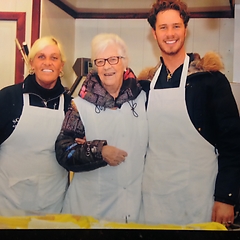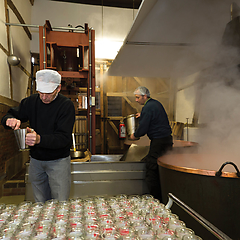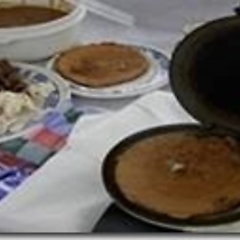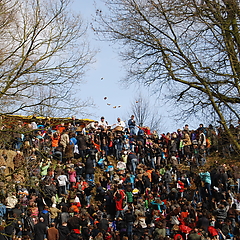The Groningen egg ball is a local delicacy. It is a cooled hard-boiled egg that is wrapped in a layer of dough, more or less like a Scotch egg. The dough, the roux, consists of flour, broth, butter, egg white and breadcrumbs. Herbs are added to the dough, which can vary per maker. The tradition consists of the making and eating of the Groningen egg ball at various occasions. Every snack bar or cafeteria has its own ‘secret recipe’, but individuals also make egg balls, passing on the preparation method from generation to generation. There are different opinions on the ingredients of the Groningen egg ball, like whether or not to use curry. The egg balls are fried on a temperature between 356 and 365F and may be eaten warm as well as cold. Naturally, the Groningen egg ball is eaten within the province of Groningen in particular. They are eaten from the hand or as a component of a meal. The egg ball is virtually always consumed in company and is also very popular as a snack during outings. Comparing egg balls and making comments is, for many people from Groningen, part of the tradition, although a real Groninger will not easily present himself as a connoisseur or an expert.



